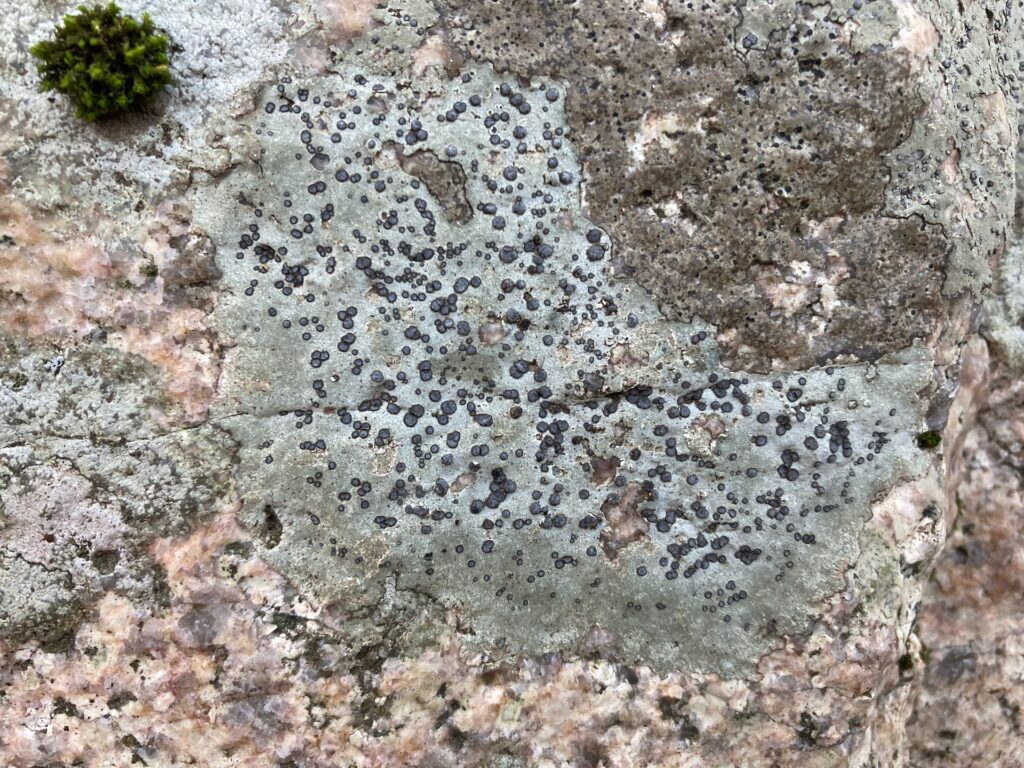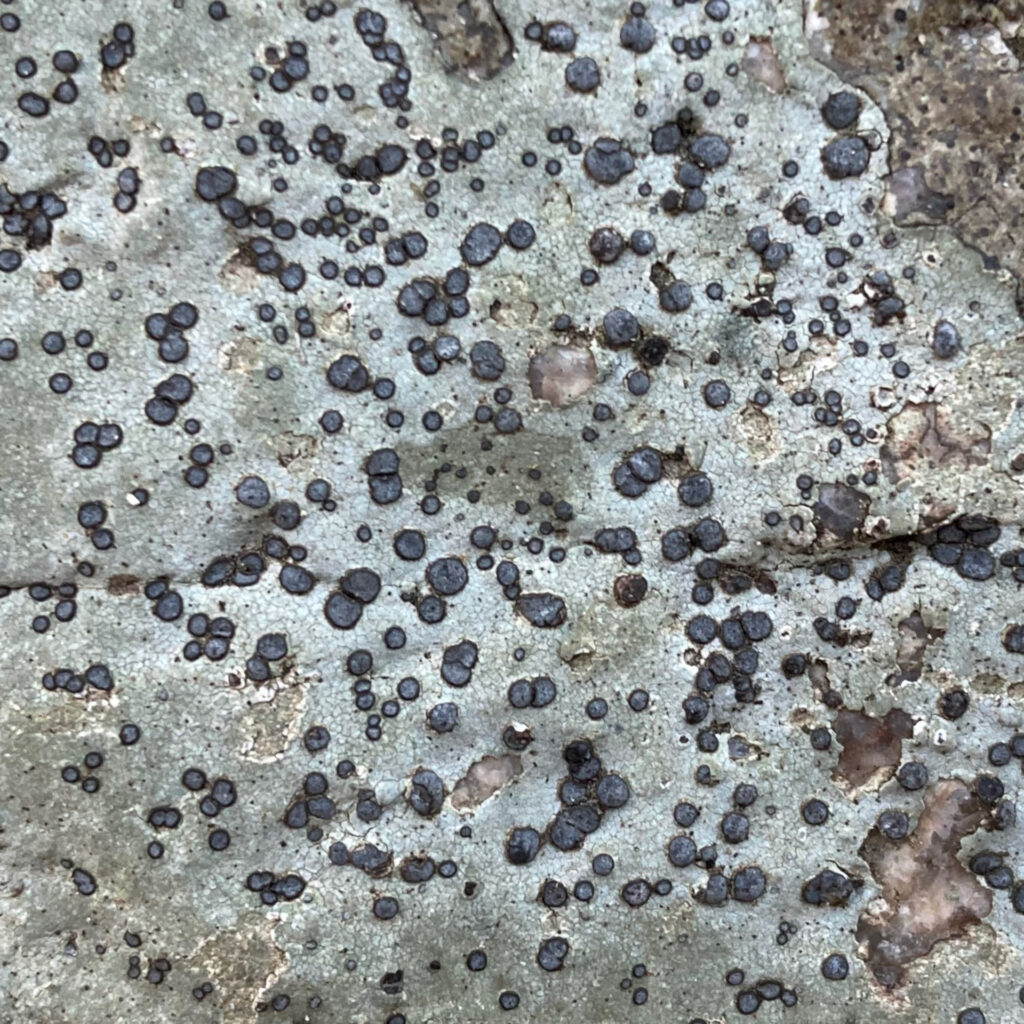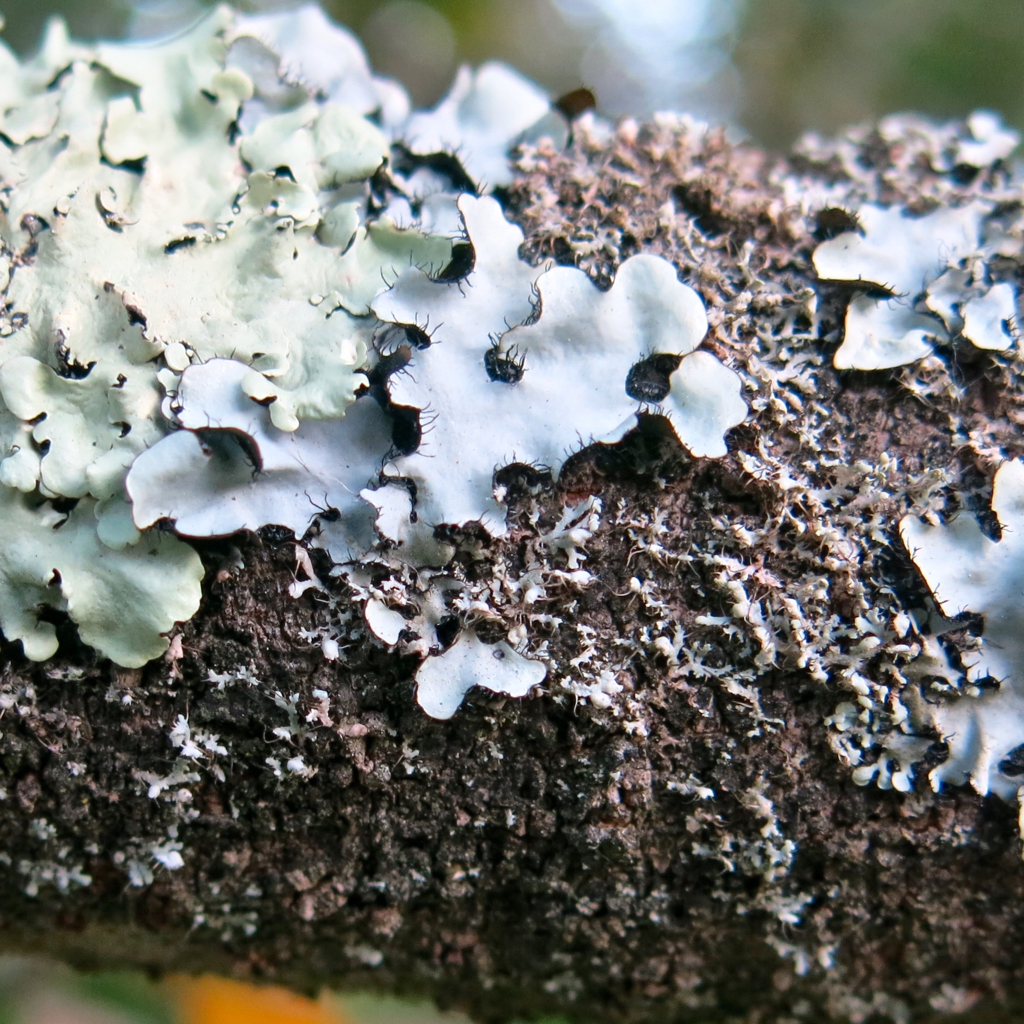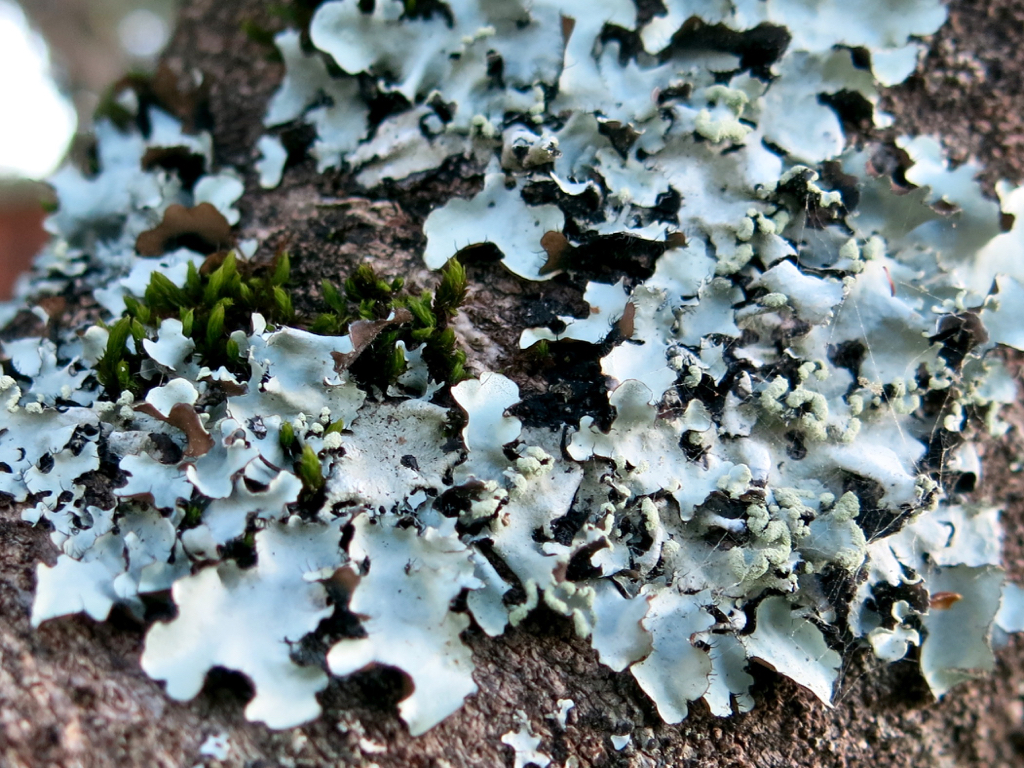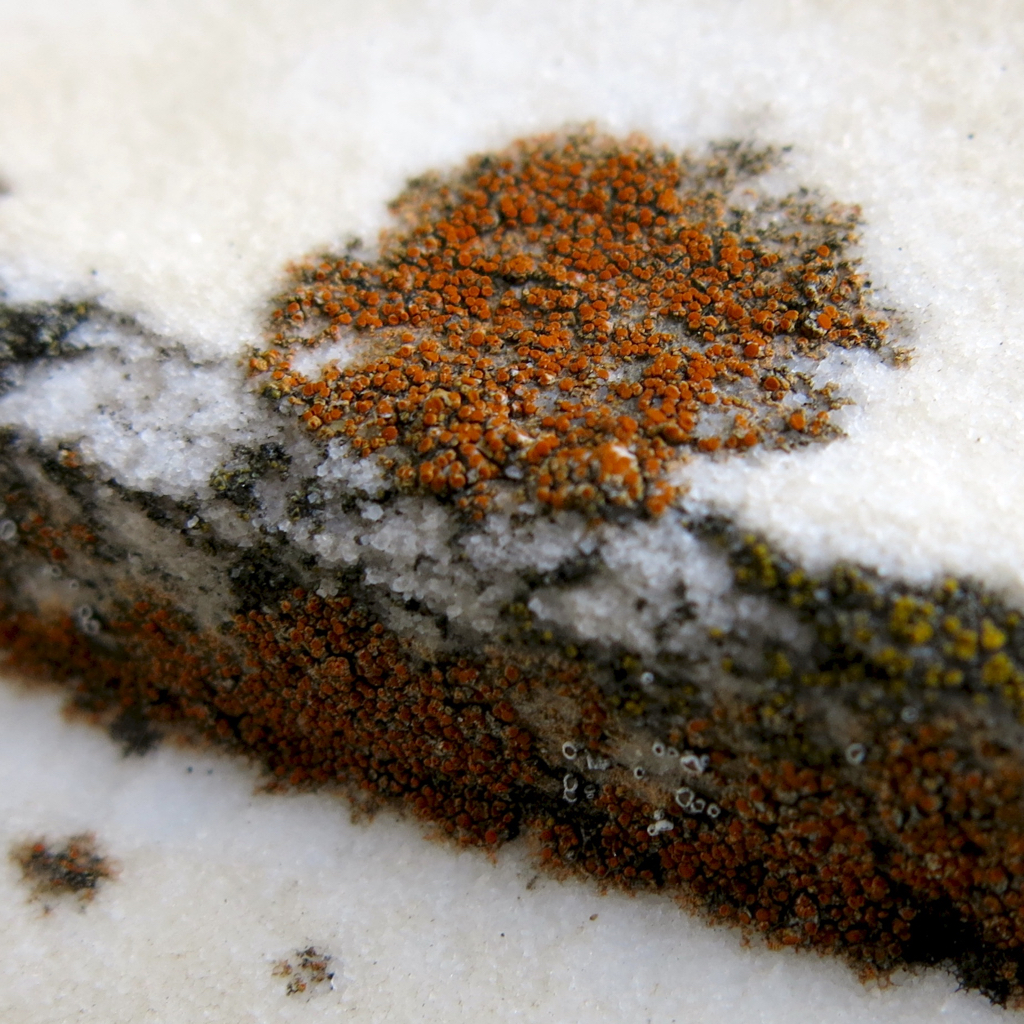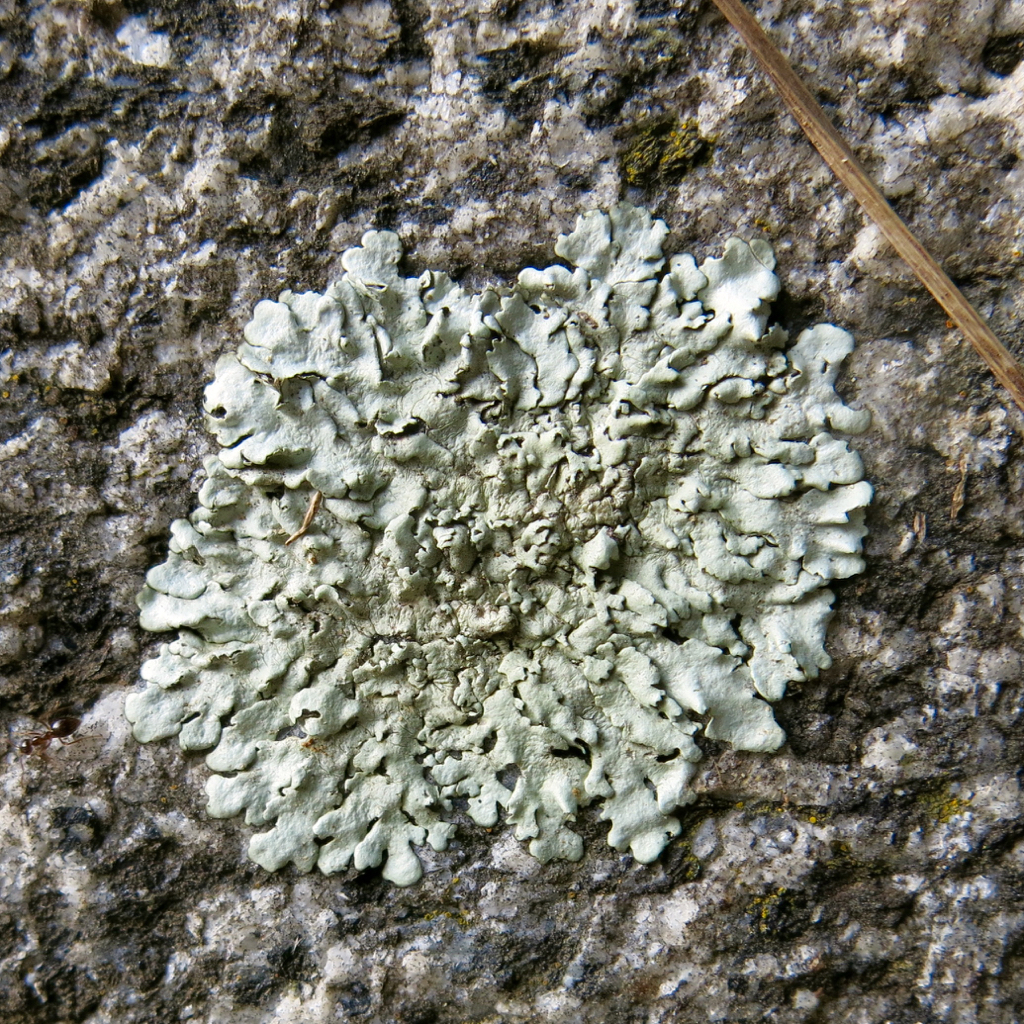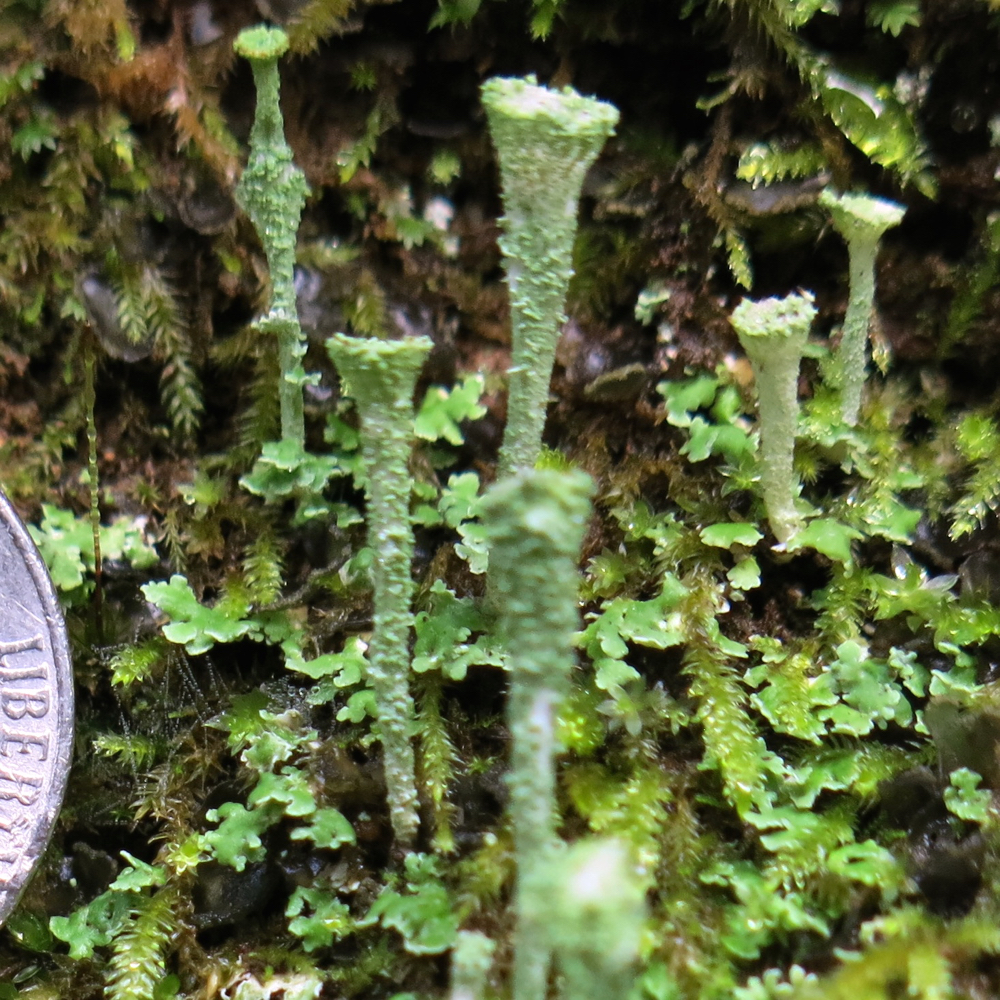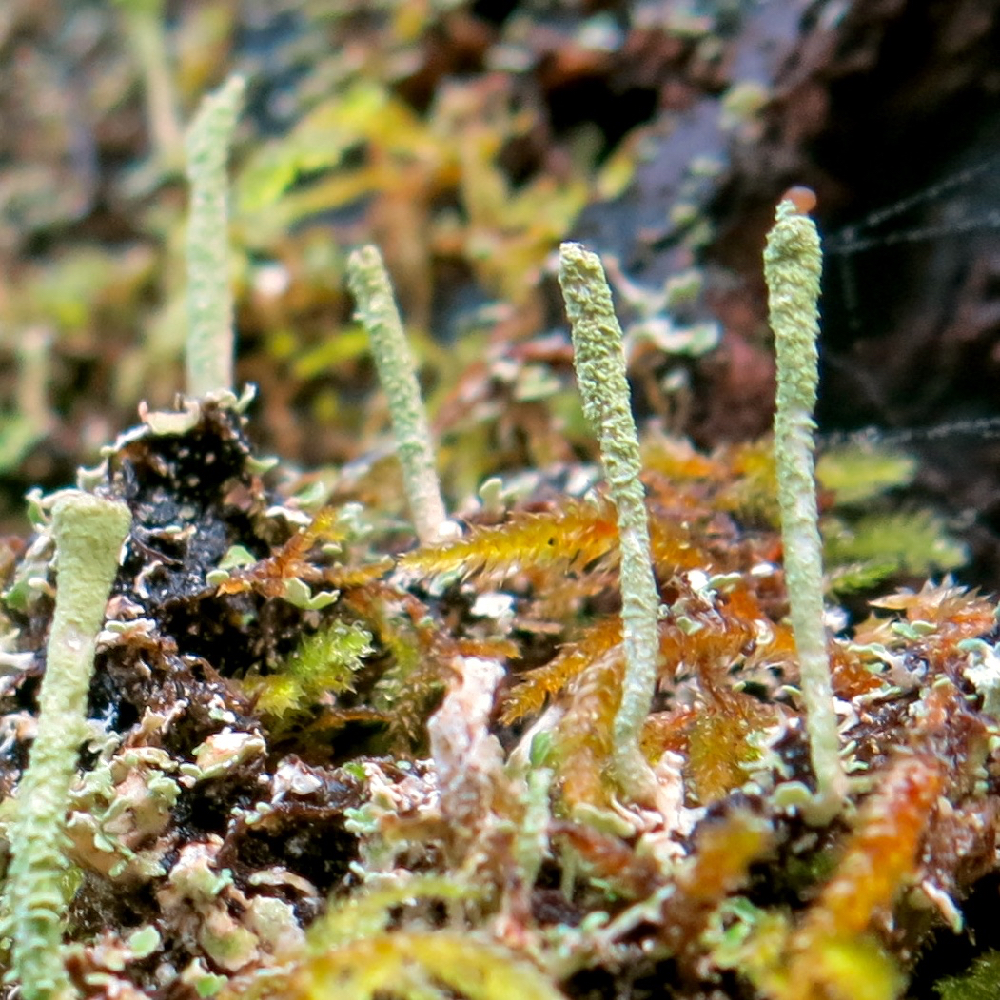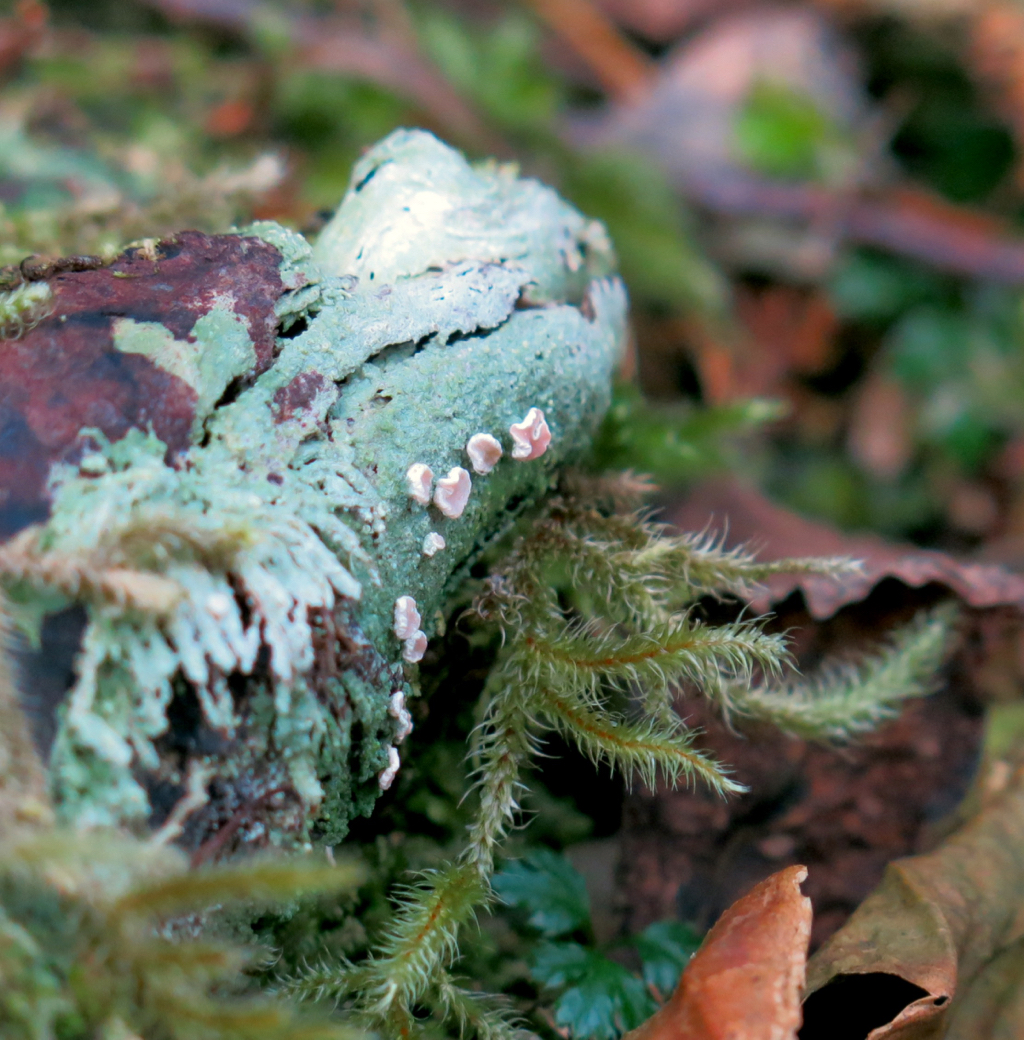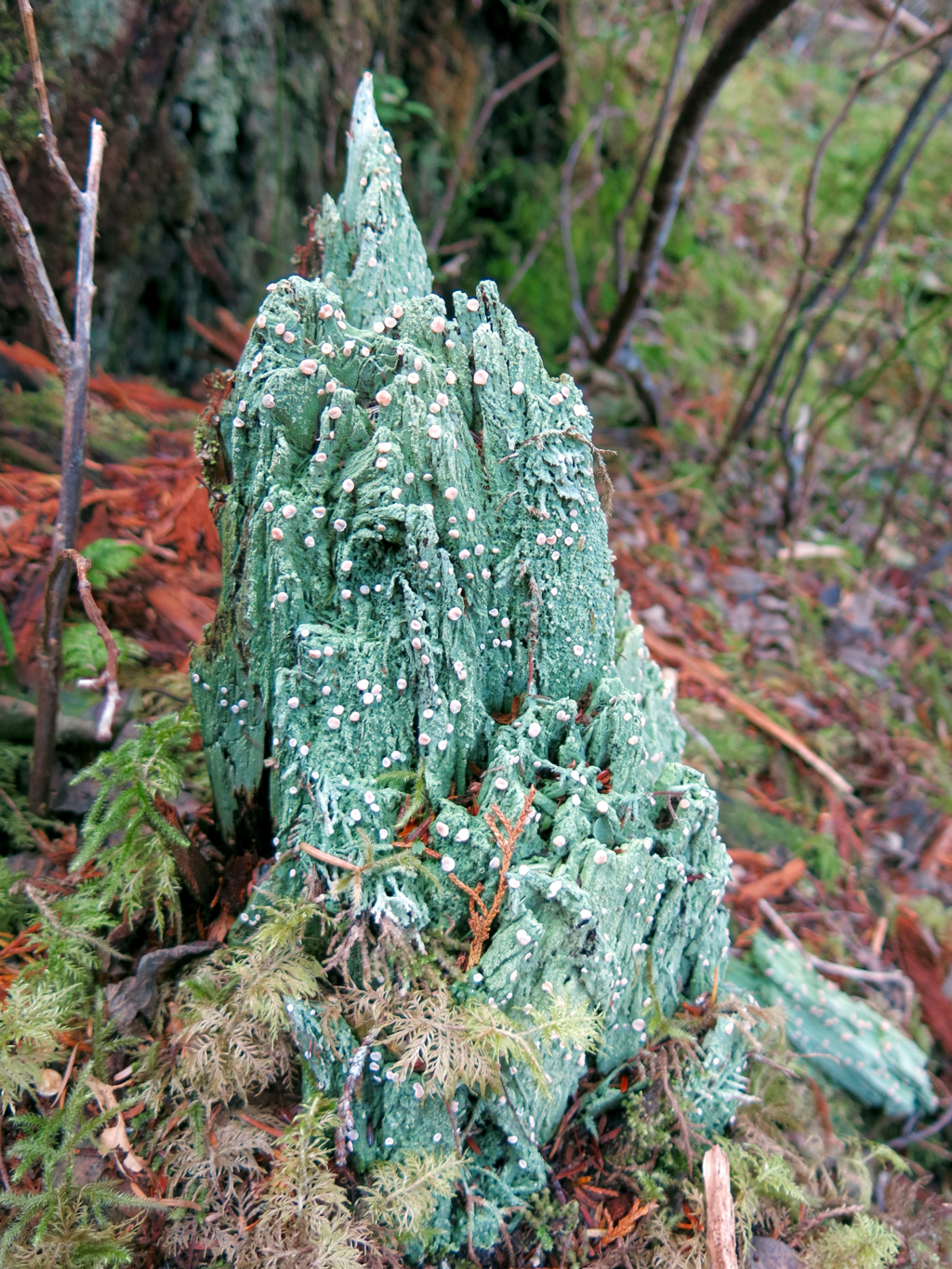Today’s walk took me a little further than intended, and dusk was settling in before I started heading home. Though I was hurrying a little, I stopped to admire a large rock outcropping that rose about twenty feet above a small artificial pond. Although the face of the rock was only about ten degrees away from vertical, it was mostly covered with plants and lichens. The lichens ranged from crustose microlichens, to Rock Tripe (Umbilicaria mammulata) the size of your hand growing in large colonies, the thallus of each lichen dangling from its umbilicus and showing bits of the dark lower surface. In addition to mosses growing in several large patches, there were a number of vascular plants, of which the most numerous were ferns, Rock Polypodys (Polypodium virginianum). But there were also two or three small trees that had rooted in the rock face, including a small Eastern White Pine (Pinus strobus) near the peak.
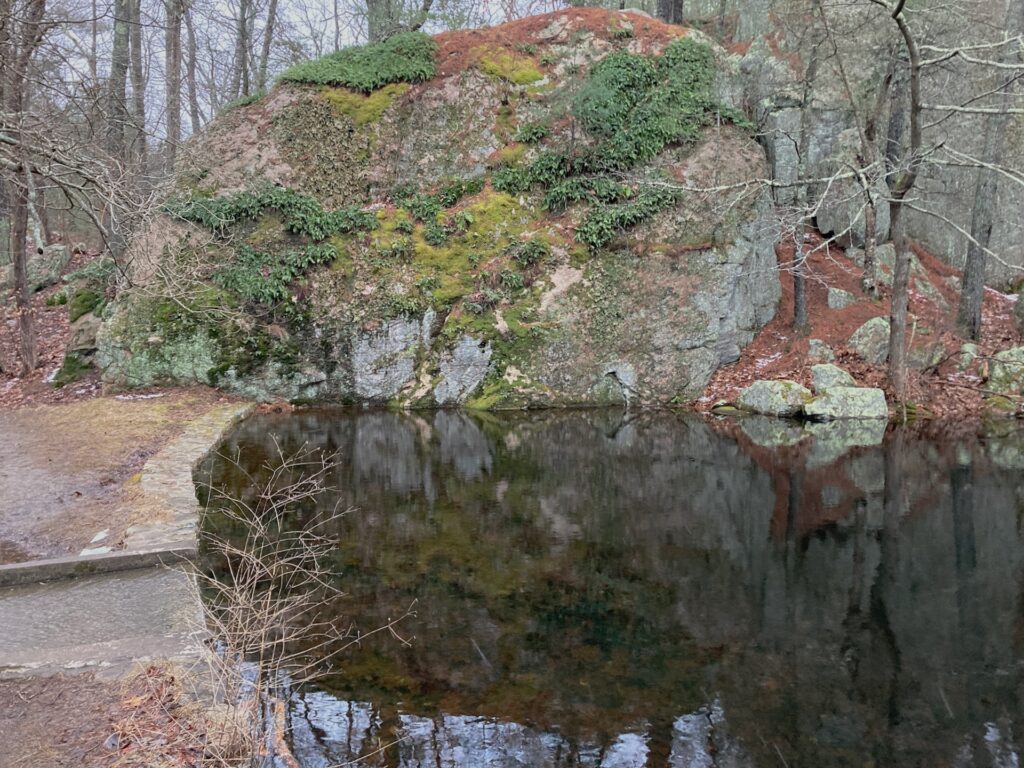
The different organisms growing on the rock created a patchwork of colors: greenish brown where the Rock Tripe grew, dark green for the Rock Polypody, and various shades of gree for the other kinds of lichen and the mosses. Here and there, the gray rock showed through the life growing on it.
It’s a trivial sight, something you see every day. I don’t know why it caught my eye today. I admired it for a minute or so, then hurried on my way.

